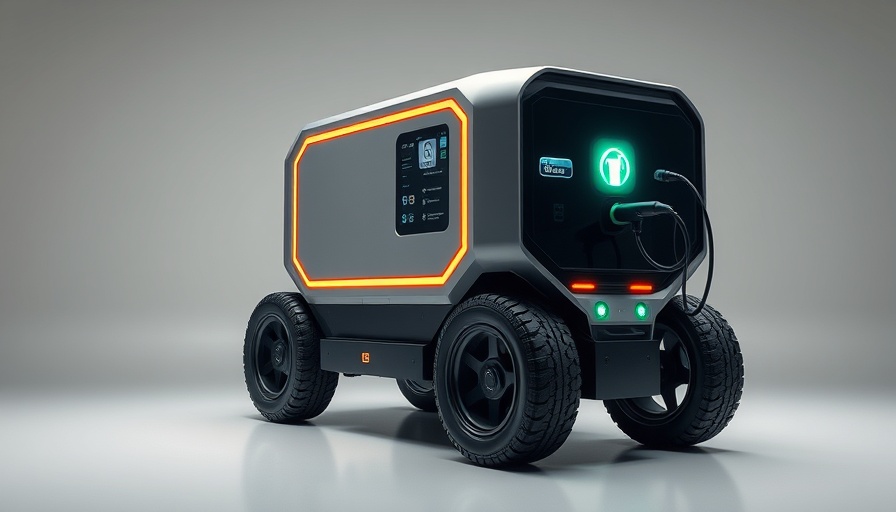
Revolutionizing Construction: The Mobile Megawatt Charger
In a significant step towards greening the construction industry, Komatsu and California-based Dimaag have unveiled a groundbreaking solution for battery-powered construction equipment. Dubbed the Mobile Megawatt Charging System (MWCS), this off-road electric charger offers rapid DC charging of up to 1 megawatt, redefining how equipment for construction and mining jobs is powered.
A Robust Solution on Rugged Terrain
The MWCS resembles a fuel truck adapted for the electric age. Its four-wheel drive and four-wheel steering capabilities enhance its ability to navigate tight spaces and challenging landscapes, making it an invaluable asset on job sites. Equipped with a modular DC-DC converter, it can deliver unparalleled power reliability, scaling up to 6 megawatts as needed, ensuring that construction operations remain uninterrupted and efficient.
Driving Forward with Technology
The MWCS’ advanced features include remote control operation and even autonomous control options, making charging on-site not just feasible but increasingly sophisticated. Its torque vectoring system ensures optimal traction, enabling it to maneuver seamlessly while delivering power. The system is particularly user-friendly, reflecting a clear vision from its creators to offer practical solutions to meet the evolving demands of the industry.
Challenges Ahead in Electrification
“Despite the challenges in developing the market for electric construction equipment, especially regarding installation costs and necessary power supply infrastructure,” says Taisuke Kusaba from Komatsu, “we are committed to advancing our efforts through collaboration.” This assertion underscores the hurdles that remain in making electric solutions mainstream in construction, particularly in sectors traditionally reliant on diesel-fueled machinery.
The Real Cost of Transitioning to Electric
Transitioning to electric construction equipment often sees resistance due to initial investment and infrastructure requirements. However, Ian Wright, Dimaag's VP of Engineering, emphasizes the long-term savings in total cost of ownership. In the race towards carbon neutrality by 2050, investments in megawatt charging systems may ultimately prove advantageous, elevating the industry toward greener practices.
Market Potential and Future Trends
As the electric construction equipment landscape evolves, innovations like the MWCS reveal a promising trajectory. With the ongoing partnership between Komatsu and Dimaag, the synergy of advanced technology and sustainable practices propels the industry toward a future where electric equipment becomes more prevalent.
Conclusion: Embrace the Future Now
The introduction of the Mobile Megawatt Charging System marks a pivotal moment for construction professionals looking to align their operations with environmental standards while harnessing cutting-edge technology. For business owners and facility managers, this means reevaluating existing practices and considering the investment into electric solutions that could redefine their competitive edge.
 Add Row
Add Row  Add
Add 




 Add Row
Add Row  Add
Add 

Write A Comment